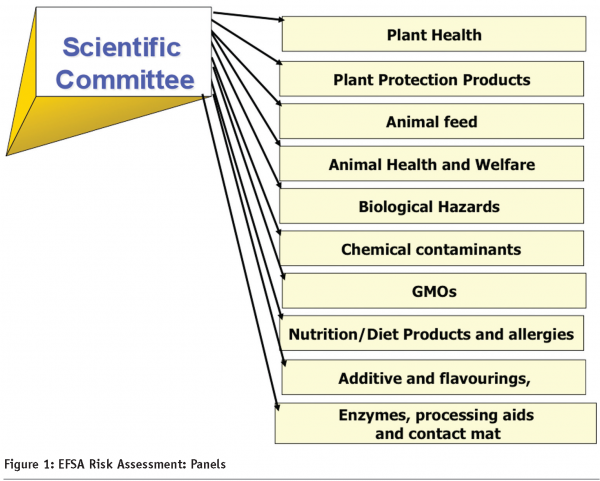Food safety: no room for complacency
- Like
- Digg
- Del
- Tumblr
- VKontakte
- Buffer
- Love This
- Odnoklassniki
- Meneame
- Blogger
- Amazon
- Yahoo Mail
- Gmail
- AOL
- Newsvine
- HackerNews
- Evernote
- MySpace
- Mail.ru
- Viadeo
- Line
- Comments
- Yummly
- SMS
- Viber
- Telegram
- Subscribe
- Skype
- Facebook Messenger
- Kakao
- LiveJournal
- Yammer
- Edgar
- Fintel
- Mix
- Instapaper
- Copy Link
Posted: 3 December 2008 | Professor Patrick Wall, Associate Professor of Public Health, University College Dublin | No comments yet
In the 1990s, a chronology of food scares, culminating in BSE, damaged consumer confidence in the safety of food, in the commitment of industry to produce safe food and in the ability of the regulatory agencies to police the food chain. These scares precipitated a review by many EU Member States of how they coordinated their food safety control programmes. Most member states now have Food Safety Agencies with consumer protection as their primary objective, rather than promoting industry and trade.
In the 1990s, a chronology of food scares, culminating in BSE, damaged consumer confidence in the safety of food, in the commitment of industry to produce safe food and in the ability of the regulatory agencies to police the food chain. These scares precipitated a review by many EU Member States of how they coordinated their food safety control programmes. Most member states now have Food Safety Agencies with consumer protection as their primary objective, rather than promoting industry and trade.
In the 1990s, a chronology of food scares, culminating in BSE, damaged consumer confidence in the safety of food, in the commitment of industry to produce safe food and in the ability of the regulatory agencies to police the food chain. These scares precipitated a review by many EU Member States of how they coordinated their food safety control programmes. Most member states now have Food Safety Agencies with consumer protection as their primary objective, rather than promoting industry and trade.
The threats to public health through the food chain caused the EU Commission to reform EU food legislation and in 2002, Regulation (EC) No 178/2002 of the European Parliament set down the general principles and requirements of food law and established both the European Food Safety Authority (EFSA) and the EU Food and Veterinary Office.
EFSA is funded from the Community budget but operates independently of the Community Institutions and was set up to be the keystone of EU risk assessment regarding food and feed safety, nutrition, animal health and welfare, plant protection and plant health in an attempt to provide a scientific basis for policies and risk management decisions. At times in the past, policies were formulated and items moved up the political agenda in proportion to the media coverage of the issue rather than in proportion to the risk to the public’s health. The EU Food and Veterinary office is part of DG Sanco and it is responsible for ensuring that Community legislation on food safety, animal health, plant health and animal welfare is properly implemented and enforced, both within member states and in those third countries from where the EU imports products.
Globalisation and increasing liberalisation of trade has meant that equivalent standards are necessary if food and ingredients are to move freely without putting consumers’ health and brand names at risk. The World Trade Organisation through Codex Alimentarious and the Sanitary and Phytosanitary Measures is the body that attempts to set standards for the global market place.
Food scares and contamination incidents have not been eradicated. The 2005 recall precipitated by chilli contaminated by Sudan red and the current melamine contaminated milk crisis in China highlight the difficulty in preventing criminal activity in the global supply chain. Far more widespread than criminal activity is false confidence and a lack of attention to detail when it comes to maintaining robust food safety management systems, as demonstrated by the incidence of foodborne diseases in most developed and developing countries. The EU Rapid Alert System for Food and Feed (RASFF) highlights problems identified by member states with products from both within the EU and from third countries. The litany of alerts highlighted on the RASFF web site each month indicates that all is not well in the global village. Non compliance with food safety requirements is a risk to be managed by every food company and needs to be a standing item on the management agenda of all food companies, whatever their scale. For the Plc, it is as important a topic for the boardroom as foreign exchange fluctuations, turbulence in the capital markets, retention of key staff and competitor’s strategies, etc. Brands and reputations that take years to build can be damaged overnight by being associated with a contamination incident. The ongoing Listeria outbreak in Canada linked to contaminated cooked meats, with a current death toll of twenty, emphasises that no company is immune and that food safety management systems need to be constantly reviewed and updated. The latter incident highlights the need to be confident in the effectiveness of cleaning, disinfection and sanitation regimens in all production facilities and the regular use of biomarkers to validate the cleaning regimens in high risk areas may have to become the norm.
Advances in forensic microbiology and the emergence of ‘disease detectives’ among the authorities in most jurisdictions have resulted in the most modern DNA based techniques now being used to identify and fingerprint germs causing human illness and track them back through the food chain to the source. In the past, companies may have knowingly, or unknowingly, produced and distributed contaminated products or ingredients and they would never have been identified. However, the newly formed European Centre for Disease Control located in Stockholm, which is another agency of the Commission, collates data on all human cases of infectious disease and identifies unusual clusters with particular fingerprints. No company can afford to be complacent about food safety and there is little point in having Rolls Royce in-house food safety management systems if the company is sourcing food and ingredients that may be contaminated. A company’s brands and reputation are only as secure as the standards of its weakest supplier. Food safety requirements should be included in all purchasing specifications as every company needs to have confidence in the food safety management systems of their suppliers and be confident that good traceability exists. Many businesses have responded to the food safety challenge and if the legal requirements are the past level in the exam, they are on the honours paper. In the past decade, the supermarket multiples have been great agents for chance forcing standards up along the food chain by stipulating food safety requirements from their suppliers. ‘Comply or be delisted’ helps focus attention on improvement.
Traceability is a much used word; however talking about it is easier than undertaking it as many processed foods can contain ingredients from many supplies in many countries and often from different continents. Having full traceability is no guarantee of safety as, in addition to knowing where products come from, a purchaser needs to be sure that they were produced and transported to correct standards. While traceability of ingredients sourced in the global market place requires innovative IT solutions to be effective, other food safety issues are not rocket science. The majority of microbial contamination incidents and outbreaks of human disease are commonly precipitated by one or more of a series of easily preventable factors including a) contaminated raw ingredients b) inadequate refrigeration c) insufficient heat treatment d) cross contamination from raw to cooked products e) poor personal hygiene of staff and f) inadequately trained or supervised staff. Staff are a company’s greatest asset but untrained staff are a company’s greatest liability.
Climate change has brought water shortages to many growing areas and water used for irrigating crops is often contaminated with sewage or farmyard manure. During 2006, there were two large multi-state outbreaks of E. coli O157 in the US associated with contaminated spinach and lettuce and in 2007, high profile outbreaks of Shigella associated with baby corn in Denmark and Salmonella in basil from Israel occurred. This is an area that will need to be kept under review as it looks like these problems are set to increase and salads once considered a low risk item on the menu may not be so any more.
The increasing power of analytical chemists presents an ongoing challenge to those in industry and in the competent authorities trying to interpret the findings. Whereas in the past, parts per million was the threshold of detection for many chemicals, now it is parts per billion and even parts per trillion as the armoury of the chemists becomes more and more sensitive. Assessing the risk, if any, of prolonged low level exposure to certain chemical is challenging to assess but more challenging to communicate to consumers who want a zero tolerance for carcinogens and other chemicals in their food.
The European Food Safety Authority (EFSA), in close collaboration with the national authorities and in open consultation with its stakeholders, is attempting to provide scientific advice and clear communication on existing and emerging risks. Independence, openness and transparency are fundamental to the effective operation of EFSA. EFSA promotes scientific excellence by bringing together the best available scientists from throughout the EU and further afield to provide objective, independent and timely scientific advice of the highest standards based on the most recent information available. The scientists do not work full time for EFSA, they remain based in their home institutions but come to EFSA to participate in committees, panels and working groups convened to address an array of issues including animal health and welfare, plant health, chemical contaminants, additives, flavourings and functional foods, etc. In the past, many Member States undertook their own risk assessments which often led to different conclusions and different responses and often resulted in one country arguing that its products were safer than those of its neighbours. Pooling all the experts to provide single risk assessments on the big issues for the entire EU is helping to provide better scientific opinions and promote common approaches to food safety which is essential when food is trading freely throughout the single market.
In addition to providing scientific opinions for crisis situations and for emerging risks, to inform policy responses, some of these panels undertake routine scientific assessments, such as those for new GMOs, pesticides, flavourings, additives and evaluation of health and nutrition claims, as a component of the regulatory process. A favourable EFSA assessment is a prerequisite for these products to be considered for approval, or licensing, by the Commission.
EFSA only undertakes risk assessments, the decision on how to manage these risks lies with the policy makers and regulators (European Commission, European Parliament, the Council of Ministers and the Member States). Although the output from EFSA is influencing the EU risk managers and is assisting with the development of more rational responses to risks along the food chain, the risk managers take other issues in addition to science into consideration when making their decisions, and these include addressing competing priorities, economic impact, acceptability to consumers and ethical considerations etc.
Although EFSA has no remit in the area of risk management, it has an ‘Advisory Forum’ which is made up of senior representatives of all the Member States’ food agencies, who meet regularly to ensure the EFSA work plan is addressing the key issues of concern in the front-line. Many of these agencies have a risk management role within their own jurisdiction and the interaction and familiarity with their colleagues from the other agencies that has developed in this Forum has led to greater consultation on risk management decisions in crisis situations and may be resulting in responses that are more consistent.
Production of safe food is the responsibility of food business operators and they need to interact with the competent authorities in the member states and at the EU level to raise their concerns and have them addressed. A collaborative rather than a confrontational approach is the way forward. It is the role of the enforcement agencies to deal with the shoddy operators and criminal activity that put public health at risk and undermine consumer confidence. One shoddy operator can undermine consumer confidence in an entire sector. Just as food is globally distributed, so is the media; only much faster with negative stories predominating, emphasising the need for enhanced surveillance and decisive action when untoward events are detected. Mistakes, delays and mismanagement are not tolerated by an unforgiving media, so money spent on preventing a crisis is better spent than on the necessary but avoidable crisis management.
There are lessons from the BSE debacle, the Belgian Dioxin crisis and the major outbreaks that occur repeatedly that have to be learnt by all the stakeholders along the food chain, as consumer confidence is a fragile thing. Trust in both the food industry and in the regulatory agencies cannot be mandated, it has to be earned. Actions speak louder than words and consumers will soon see if profit is placed before public health.








